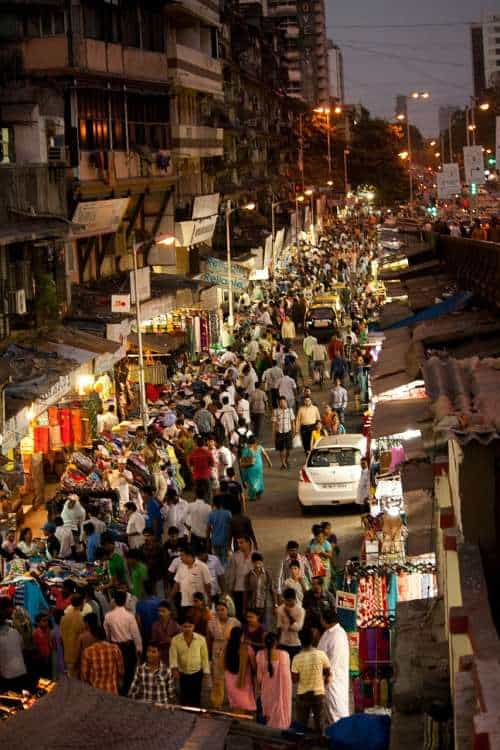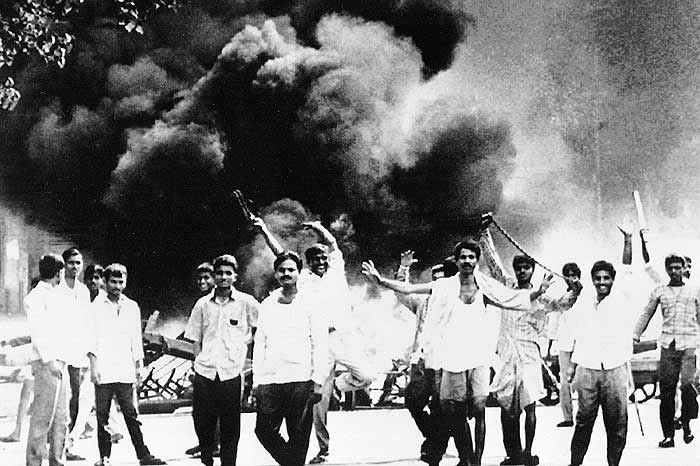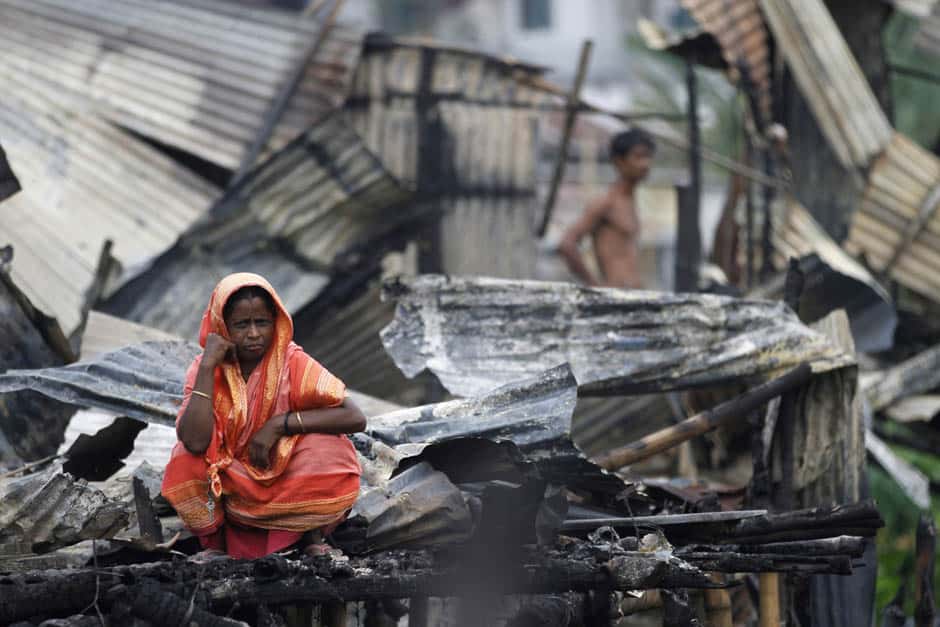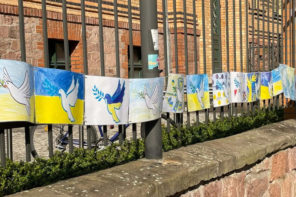Brief extract from a forthcoming publication
Over the past decades, the rapid rise of Hindu nationalism or Hindutva in India has placed women at the centre of its violent socio-political rhetoric. Whether it was the vituperative speeches developed by powerful women renouncers urging Hindu men to be challenge ‘the Muslim threat’, or the role of Hindu nationalist social workers in facilitating conversions to Hinduism in rural areas — the imagination of Hindu nationalist women as extraordinary ‘home-grown terrorists’, or ordinary foot soldiers, has captured the attention of the nation. Muslim women are also placed at the heart of the debate around Hindutva terror, as they become the primary targets of rape and killing when communal antagonism eventually spills over into rioting. Religious organisations and political parties come forward to support, speak for and protect the rights of both groups of women. For example, the Shiv Sena, the dominant Hindu nationalist political party in Mumbai, played a key role in criticizing the actions of the anti-terrorist squad, as the latter arrested renouncer/Sadhvi Pragya in relation to a series of blasts that killed and injured numerous ordinary people. And the Tablighi Jamaat, a pietist Islamic movement, marginalized the moderate Barelvi’s, and became deeply concerned with reforming women in relief colonies, especially those assaulted and widowed during the outbreak of riots in Gujarat in 2002.
This post will open a window into the short narratives of two women who became implicated in the Mumbai and Ahmedabad riots in 1992-3 and 2002 respectively. The authors, both anthropologists, have conducted long-term fieldwork in the slums of Mumbai and Ahmedabad where the experiences of inter-religious tensions continue to determine not only everyday interactions, but also the territorial reorganization of localities (Sen 2007, Jasani 2008). Without regurgitating issues around political mobilization of ordinary women, or reanalyzing minority women’s victimhood, this post will offer two ‘undiluted’ case studies of (a) a Hindu woman rioter attacking Muslims in Mumbai, and (b) a Muslim woman confronted with Hindu mobs in Ahmedabad. The sequence of events described by the women highlights how the dread of Hindutva-related processes on the ground defined notions of safety and solidarity amongst both casualties and perpetrators of violence.
The two voices of women occupying these contested spaces further reveal how women’s experiences of suffering and loss during the eruption of religious hostilities are intimately related to their domestic space, family relations, bereavement, mobility, their socio-economic position within urban ghettos, the integrity of female bodies, etc., over and above women’s disillusionment with the state, secular and faith-based organisations.
A brief description of the ‘riot moments’
In December 1992 and January 1993, large-scale communal riots broke out in Mumbai, which left over a thousand people dead and several others injured. Following the organized destruction of the Babri Masjid by Hindu nationalists in Ayodhya, small groups of angry Muslims held low intensity protests in Mumbai (in December). The Shiv Sena, a right-wing political party, which had established a strong base in Mumbai through an anti-migrant, anti-Muslim agenda, initiated a massive backlash against local Muslims. The ensuing violence involved arson, destruction of property and indiscriminate attacks on people. The rioting dispersed from slum areas into chawls and apartment blocks, and in most localities entailed the systematic targeting of Muslims who comprised nearly 20% of the city’s population.
Members of the Shiv Sena’s women’s wing, the Mahila Aghadi, took to the streets in droves, and their open participation in the riots shocked and disappointed the secular women’s movement in the city.
The women rioters on the other hand brought the relatively marginalized Mahila Aghadi into the forefront of nationalist politics in Mumbai. In 1999, Sen conducted research among Aghadi members in a riot-affected Mumbai slum. She documented the slum women’s rationale for politically organizing themselves around Hindu nationalist ideologies, and investigated the ways in which their recruitment into the Mahila Aghadi subsequently led to poor women’s contribution to communally charged public protests, street fights and open looting.
A decade later, in February 2002, massive riots broke out between Hindus and Muslims in Gujarat, a state with a controversialHindu nationalist leader at its helm. This time the outbreak of violence was sparked off by a debatable attack on an express train carrying large numbers of Hindu nationalists, which left a number of women and children dead. Over the next three months, the riots spread quite intensely through Ahmedabad, the capital of Gujarat, where raging Hindu mobs burned down Muslim housing estates, destroyed mosques and religious shrines, and raped and killed scores of Muslim men, women and children. At the end of what several scholars and political commentators described as a ‘genocide’ or a ‘pogrom’, thousands of people were dead, mostly buried in mass graves, several others were injured, missing or lay unidentified in city morgues. In 2003, Jasani conducted research on the displacement of riot-affected Muslims in Ahmedabad, a chunk of her research being based in the ghetto of Naroda Patiya, where 97 people were killed on 28th February, 2002. She studied the Muslim community’s engagement with reform initiatives offered by Islamist organisations, and underlined the agency of both men and women in re-aligning their public ethics according to their engagement with the shifting city-scape.
Even though the character and culture of the two urban riots were contrary, Sen and Jasani found a number of commonalities: such as the complicit nature of the state, changes in the spatial construction of the ghettoes, the taciturn relationship between migrant slum economies and urban violence, the role of the Hindu and Muslim political mafia in sustaining communal tension, the sordid nature of the violent conspiracies, the well-coordinated and perfectly pre-planned aspects of the supposedly ‘spontaneous riots’, amongst others.
Most the informants that the authors interviewed with during their fieldwork eventually identified the riots as dramatic episodes, which altered their familiarity with the cities they came to inhabit as their home. But most significantly, the authors uncovered the constant desire of women and children, moving swiftly between discourses of victimhood and agency, to give prominence to their individual and shared experiences of the riots. Emphasis on dominant political histories of communalism in India (cf. Jaffrelot 2007, Van der Veer 1994, Ludden 1996, Pandey 1993) has tended to marginalize the fragmented and fractured experiences of people living with everyday communal tensions. By drawing the reader into the gritty reality of slum life, this chapter is an attempt to fill that gap by offering the testimonies of two women who were struggling (in their own words and on their own terms) to comprehend and survive urban riots.
A glimpse of the women’s narratives and urban riots
Radha, 40, Mahila Aghadi cadre and (calendar) factory worker, resident of a Bandra slum, Mumbai
I had been an active member of the Shiv Sena for many years, well before the riots. The Mahila Aghadi (when it was formed in 1985) gave me so much support. When I was not well or when I was not working, the Aghadi members in my locality got me grain and they looked after my children, they warned by husband to look after me… To you this may not be related to the riots, but I tell you, this is how we slum women gained each other’s trust. So when the riots happened, we could ‘show our daring’ together, otherwise real courage cannot be found in ‘hi hello’ relationships.

We women discussed these losses all the time. Many Aghadi women had gone out of the house and joined night patrols and protection teams. And here I was twiddling my thumb when the Aghadi had already done so much for me.
We had a brief respite between the two phases of the riots. Everything was getting back to normal again. The Muslims probably thought quietness was a sign of weakness. So once again, there were attacks on us. Then these bastards burned down Radhabai Chawl, just because there were Hindu families living in a Muslim gully. So many Hindu people were trapped inside, so many people perished. My Aghadi friends said: ‘Radha, your name is in that chawl.’ That is all they said, I promise you. Then there was the Suleiman Bakery shooting which everyone was talking about. Muslims stood on the rooftop of the bakery and shot at Hindu policemen with automatic weapons. And the policemen were trying to fight back with their old guns from the time of English rule! The Muslims were trying to show us what? That they have guns? They have manpower and rape-power? No one looked into these cases because the Muslims were attacking Hindus…

When they saw us they looked away thinking: ‘What will a bunch of women do to us’? They see us everyday: cooking, cleaning looking after our families, being polite to them in the bazaars while shopping, how can we hurt them?’ Paravi, one of the younger women, picked up a stone and threw it at the bus and smashed the windshield…
We all picked up whatever we could and started throwing them at the bus. The policemen were startled and came running towards us. They thought we were being attacked. But when they saw we had the stones in our hands, they left in a hurry. When the riots happened in December, the overworked policemen were out on the streets for hours, their feet were swollen in their boots. We slum women would take them buckets of water to dip their feet in, and they could barely get them out of their shoes, poor things. One of them told me: ‘Tai, I remember you came with water. I am leaving, but you be careful.’ In the meantime, the bus swerved and came to a stop. The men tried to rush out, but we kept throwing stones at them… I lifted my sari above my knees and ran after them, I was beyond shame. They were bleeding and trying to cover their faces with their hands, but we kept going…
One of the girls said ‘Next time, we have to carry sticks. This was only a start. We were unprepared so we had to make do with whatever we found on the street. Next time we will be more equipped.’ And we were.
Afshan Bibi, 40, mill worker, resident of Naroda Patiya, Ahmedabad
I have lived with my family in Naroda Patiya for almost ten years. My father moved here from Karnataka to work in the mills. He was a joiner in Telco mills. We grew up in Gomtipur, the suburban mill area, and moved to Patiya as the basti was moving due to overcrowding and no work. I worked on a thread assembling machine and went to work as normal on the morning of 28th February. I realized that the riots had started in the afternoon when some VHP (Vishwa Hindu Parishad, a conglomeration of Hindu nationalist organizations) goons came looking for Muslims working in the factory. The owner shut the factory door and told them that it was closed. By then, rumors had spread that riots had started in Naroda Patiya.
I was worried about my children as my 16-year-old is disabled and would not be able to escape if our house was attacked. I could hear screams outside the factory saying ‘maari nakho’ (kill them), ‘kaapi nakho’ (cut them). I was terrified to leave the factory, but needed to get out to see if my family was safe. I covered my head and wore a bindi (vermillion mark) and started walking towards Patiya… On my way, I saw piles of burnt bodies and pools of blood everywhere… I went back to the factory and spent the night there. The next morning, I went to Shahibaug camp and registered details of my family. I had also heard from people at the camp that Naroda Patiya was badly affected and that rioters had played with the izzat (honour) of our girls. I was worried about both my daughters.
I could not leave the camp as the city was not safe. All I saw was hoards of wounded people, raped women and mutilated bodies being brought into the camps. My fellow campmates warned me against getting out, as the city was full of men in khaki chaddas (shorts), saffron vests and black bands on their forehead. There was curfew and I knew that the dead in the riots were being buried at a samshan (burial ground) near Shahibaug… On making some inquiries, I found out that the inmates of Naroda Patiya were at Shah Alam camp. I made my way to the Shah Alam Camp in a sanstha (NGO) van, and found out that I had lost 7 members of my extended family including my own daughter. One of my daughters was in Vadilal hospital fighting 80 percent burn injuries…
Jai Bhavani, a local VHP leader, who led the mob along with a police official, assured the Muslims that arrangements had been made for them towards the maidan (open ground). As the group of ninety people (mostly women and children), were going towards the ground, two mobs attacked them from an open alley.
The wall of the ST (State Transport) workshop prevented them from fleeing and they were all trapped in a small corner near a water tank. The attackers climbed on the roofs of the houses and started dousing them with kerosene and throwing burning tyres at them. It was at this time that young girls were pulled out of the group, raped and then murdered. Fifty-eight bodies were recovered from this site, 27 survivors of this incident were then taken to the Civil hospital or VS hospital at about 7:30 p.m. My daughter was one of them.
I do worry about her as she has almost blocked the incident. Yes, so I was telling you, as soon as I got to the camp, I asked to be taken to Vadilal to see my daughter. When I got there she was unrecognizable. Her face and her body on one side had been burnt, including her private parts. The doctors were convinced that she would not survive the burn injuries. She was breathing heavily and was not conscious…
What to tell you bibi, it was like hell. I also had to answer questions from the akbharwale (journalists) as my daughter Shabbo was the only young girl who was saved from the lot that were burnt in Naroda Patiya. Everybody wanted a piece of her while she was fighting death for three months in hospital… My husband had fled with my two sons during the violence, and Shabbo along with her sister were left behind. We found no trace of her sister. We suspect that she was dumped in the well close by. The bodies in the well were mutilated by the time they were dug out. I am sure she was in there, as Shabbo was found not far from the well… We had seen riots in the past, but things would calm down in a week or two. This is the first time that the rioting has continued for so long and has taken place in such organized fashion. This has become a scary city to live in. But, we don’t have any other options as we grew up here. This is home and we cannot go anywhere else.
Concluding comments
The two narratives brought forward by the co-authors, though collected at different points in time and from different perspectives, show that women’s accounts of riot situations can be placed on a continuum, and they raise difficult questions about gender and communal conflict in post-colonial Indian cities. Desecration of religious symbols, the role of rumors, state inactivity, the imagination of ‘pre- and post-conflict’ lives, the fear of losing employment in the communally divided city, battered masculinities and femininities, and migrant vulnerability in working class areas are some of the themes that bind together women’s memories of violence.
For example, in both narratives, women used the tropes of motherhood and dread of losing their children in order to rationalise their acts of courage; whether it was Radha stepping outside her house into the heart of a volatile street to ward off so-called rioters, or whether it was Afshan Bibi leaving the safety for her factory and striding into a riot-torn alleyway to hunt for her children.
Both women eventually tried to fathom how riots changed their emotional engagement with their city, and altered their attitude towards the make-shift corners that housed their dreams and aspirations. While Radha intended to remain aggressively prepared to counter communal tensions in her slum, Afshan Bibi and her ravaged daughter retreated from a terse public sphere and endeavoured to find safety within the confines of a temporary shelter.

Bibliography
Gupta, Dipankar. Justice before Reconciliation: Negotiating a ‘New Normal’ in Post-riot Mumbai and Ahmedabad. New Delhi: Routledge India. 2011.
Jaffrelot, Christophe. ‘The 2002 Progrom in Gujarat: the Post 9/11 Face of Hindu Nationalist Anti-Muslim Violence’, in John R. Hinnells and Richard King (eds) Religion in South Asia: Theory and Practice. New York: Routledge, (2007): 173–192.
Jasani, Rubina. “Violence, Reconstruction and Islamic Reform—Stories from the Muslim ‘Ghetto’.” Modern Asian Studies, 42.2-3 (March 2008): 431-456.
Jasani, Rubina. ‘A game of hide and seek: Gendered ethnographies of the everyday state after communal violence in Ahmedabad, Western India.’ Contemporary South Asia. 19.3 (2011): 249-262.
Ludden, David. Making India Hindu: Religion, Community and the Politics of Democracy in India. Delhi: OUP. 1996.
Pandey, Gyan. (ed). Hindus and Others: The Question of Identity in India Today Delhi: Viking. 1993.
Sen, Atreyee. ‘Reflecting on Resistance : Hindu Women ‘Soldiers’ and the Birth of Female Militancy’. Indian Journal of Gender Studies 13.1(2006): 1-37.
Sen, Atreyee. Shiv Sena Women: Violence and Communalism in a Bombay Slum. London: C Hurst and Co/Indiana: Indiana University Press, 2007.
Van der Veer, Peter. Religious Nationalism: Hindus and Muslims in India. London: University of California Press. 1994.













